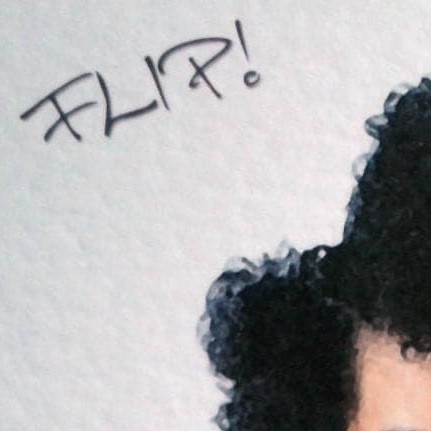So to answer what I assume is going to be the most common question here, this is a circuit diagram, but every neuron is like its own little programmable integrated circuit with a small amount of internal memory and those aren’t mapped here. So this is an excellent model to explore how neurons connect to each other and get insight into cognition and the function of the brain but it is far from something that can simply be simulated on a computer.
can this map be… simulated?
perhaps put into a computer program with simulated inputs from a virtual environment?
There’s alot of “calculations” done internally in a neuron that we cant map yet
Fucking DLLs
Shared objects on Linux.
I’ve been using Linux for longer than I’ve been an adult, I’ve worked in the field for around fifteen years, and TIL what .so means. Thanks!
We’re probably pretty similar. I haven’t been a Linux user as long as I’ve been an adult (close), but if you include BSDs, then I have, since I dabbled w/ FreeBSD as a kid.
I’m a SW engineer and I like compiled languages, so linking in C libraries comes w/ the territory. If it wasn’t for that, I would probably just call them DLLs (dynamic-link library, FWIW), since they do the same thing at the end of the day.
“That I don’t we can map yet”
Seems like your brain failed to calculate a few things when trying to write that.
interesting. what kind of “calculations”? what do we know about it?
I recall seeing the brain of like an amoeba or something very small with only like 100 neurons or something being simulated.
You certainly didn’t see an amoeba brain. They are single cells. I wonder if you heard about the efforts to do the same thing with a nematode?
I believe it’s this one.
https://flywire.ai/
https://github.com/seung-lab/FlyConnectome
But I also found second one.
https://www.fruitflybrain.org/
https://github.com/fruitflybrainRemoved by mod
That is super cool. Can we might simulate it in a virtual environment? If so, would that be the first matrix like virtual world?
I think they already did that with a nematode.
openworm did not map all the neurons yet. But soon 🤞
Great, now I’m imagining a group of flies in leather trenchoats.
Mr. Fruiterson, how can you buzz, if you don’t have a labium.
This hypes me so much more than GPT-based tools
As neural networks in AI are inspired by nature, new techniques will surely follow the insights gained by such brain mapping research.
Neural networks in AI barely relate to any biological neural network.
Neural networks in AI are essentially a “scored” pachinko machine, with each peg having different numbers, which cause a “score” to go up for the “right” answer.
Basically, just a really fast, and expensive sieve filter.
I said “inspired by” and not “exact digital replicas”.
In classical MLP networks a neuron is modeled as an activation function depending on its inputs. Connections between those are “learned”, basically weights which determine the influence of one neuron’s output on the next neuron’s input. This is indeed Inspired by biological neural networks.
Interestingly, in some computer vision deep learning architectures, we have found structures after the training procedure which are even similar to how human vision works.
There are a bunch of different artificial neural network types, most – if not all – inspired by biology. I wouldn’t be so bold to reduce them in that absurd manner you did.
I said “inspired by” and not “exact digital replicas”
its not, though. Its best described as inspired by a big pachinko machine, with weighted pegs.
It is almost in no way inspired by. Thats just propaganda being put out to make AI more palatable, and personable.
There are a bunch of different artificial neural network types, most – if not all – inspired by biology. I wouldn’t be so bold to reduce them in that absurd manner you did.
I would be, because it’s factual.
If it was “inspired by” it would be able to tell the difference between running over a person, and avoiding a car, by example. It wouldn’t start hallucinating when asked simple questions, because a biological brain acts in congruence with it’s inputs.
Which happens because of a web of interconnections and spanning of multiple sphere’s, with two major ones acting as checks on the other. Which is nothing like any current AI model.
In current models, each token has a limited number of interconnects, and always to a neighbor node. That is nothing like a biological neuronal network.
its not, though. Its best described as inspired by a big pachinko machine, with weighted pegs.It is almost in no way inspired by. Thats just propaganda being put out to make AI more palatable, and personable.
Get your facts straight.
The multi layer perceptron was first proposed in 1943 and was indeed inspired by biological networks: https://doi.org/10.1007/BF02478259You can be sure this wasn’t to make it “more palatable”, wtf.
Regarding the rest of your reply:
You seem to be expecting a fully functioning digital brain as replica of the human brain. That’s not what current ANNs in modern AI methods do.
Although they are in their core inspired by nature (which is why I originally said that advancements in brain research can aid the development of more advanced AI models), they work structurally different. And ANNs for example are just simplified mathematical models of biological neural nets. I’ve described basic properties before. Further characteristics, like neurogenesis, transmission speeds influenced by myelinated or unmyelinated axons, different types and subnets of neurons, like inhibitors, etc., are not included.
There is quite a large difference between simplfied models which are “inspired by” nature and exact digital replicas. It seems you are not accepting this.
I’m not sure I understand the distinction they’re trying to make between the connectome and the projectome.
The connectome is a map of individual neurones. The projectome is a map of how larger regions interconnect. Particularly the relative strength of the links.
It’s the difference between a detailed road map vs the relative road capacity between countries. It cuts out a lot of fine detail to see larger patterns. Both are useful, but in different ways.
I’m actually stunned that a cell-level map, the connectome, is even possible. Are we saying that every fruit fly has all these individual brain cells in this very particular configuration? I always assumed that major brain organelles might be the same from individual to individual but not down to the level of individual neurons. Am I reading something wrong or are individuals really similar as this?
Provisio, I have not read up on this particular experience.
Fruit flies, as used in labs are not like their wild cousins. They have been bred to be exceptionally consistent, since this makes X-Y experiments easier. If you take genetically identical eggs, and raise them in effectively identical conditions, you get almost the same wiring.
There will still be areas of variability, but a lot will be conserved. This is likely an “average” wiring. Once you have even an approximate baseline, you can vary things and see how the wiring adapted.
The way I understand it:
Connectome: Displays the synapses between individual neurons
Projectome: The links between regions of the brain via neurons that synapse across regions (basically a subset of the connectome)
So if the connectome is a map of every road, highway, dirt path in the USA, the projectome is a map of the interstates between major cities.
Please someone tell me if this is way off base.







